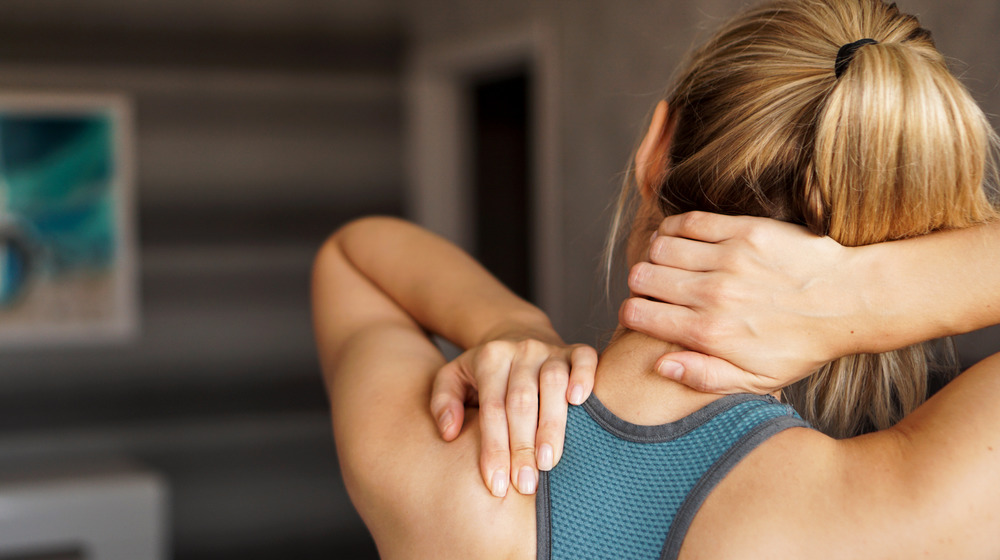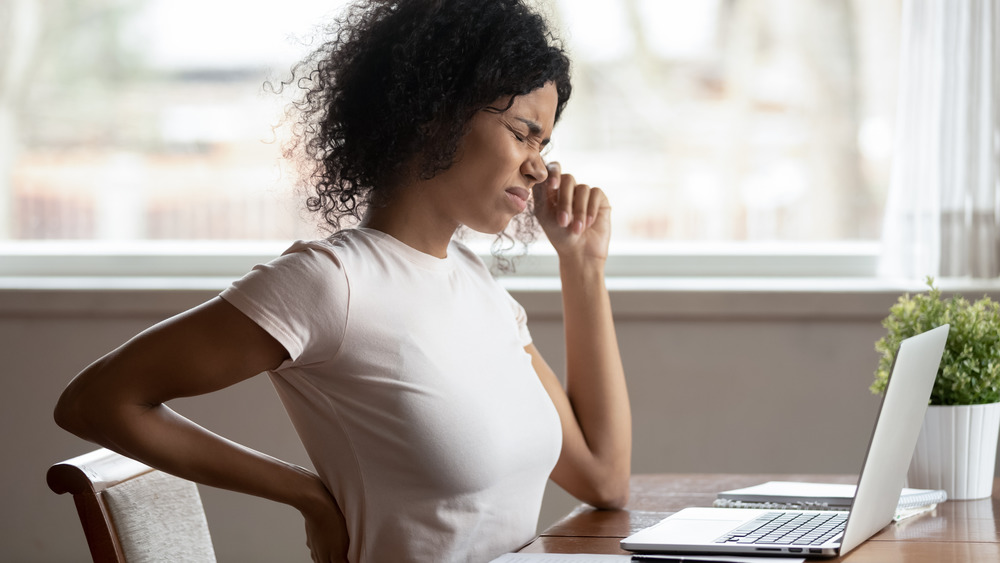Why Your Posture Might Be Doing Damage To Your Workout
You may not think much about your posture over the course of the day — slouched over your desk, hunched over you phone on the couch, sleeping at a strange angle in bed — but your workout can actually be negatively impacted by the way you're standing, sitting, and lying throughout the day.
This is largely because your spine is spending a lot of time in that semi-hunched position, which isn't going to be ideal for going from couch to 5K or CrossFit. "The muscles on your back side are getting lazy from being overstretched. They're relaxed all the time from rounding over," physical therapist Sharif Tabbah, D.P.T., told Bustle. That's not just bad news for your back, it also means your front — your chest and shoulders — are getting tighter. Think about how rarely you actually open your arms out wide, or stretch your chest muscles, as you go about your day. Then, you expect to be able to bench press or breathe deeply on a run with no issues? Think again.
How can you fix your posture?
The good news is that you can make small adjustments throughout the day to remedy this problem, and that exercise itself is a great way to correct your posture from a day spent sedentary. Be aware of your posture when you walk or run, and focus on opening up your chest and shoulders rather than continuing to hunch. You might also consider adding in some yoga to your workout routine, since the different postures can help improve your overall mobility and help undo some of the damage you do while sitting hunched at the desk all day (via the Cleveland Clinic).
While you are working at home, take regular breaks and either simply walk (to the bathroom, to get a glass of water, to take the dog out, or to check the mail) or do a few yoga stretches throughout the workday rather than saving up all of your movement for just one workout. And you can also improve your desk setup by putting your computer screen at eye level so that you aren't as hunched over, and making sure that you can comfortably rest both feet on the floor (via the Mayo Clinic).

